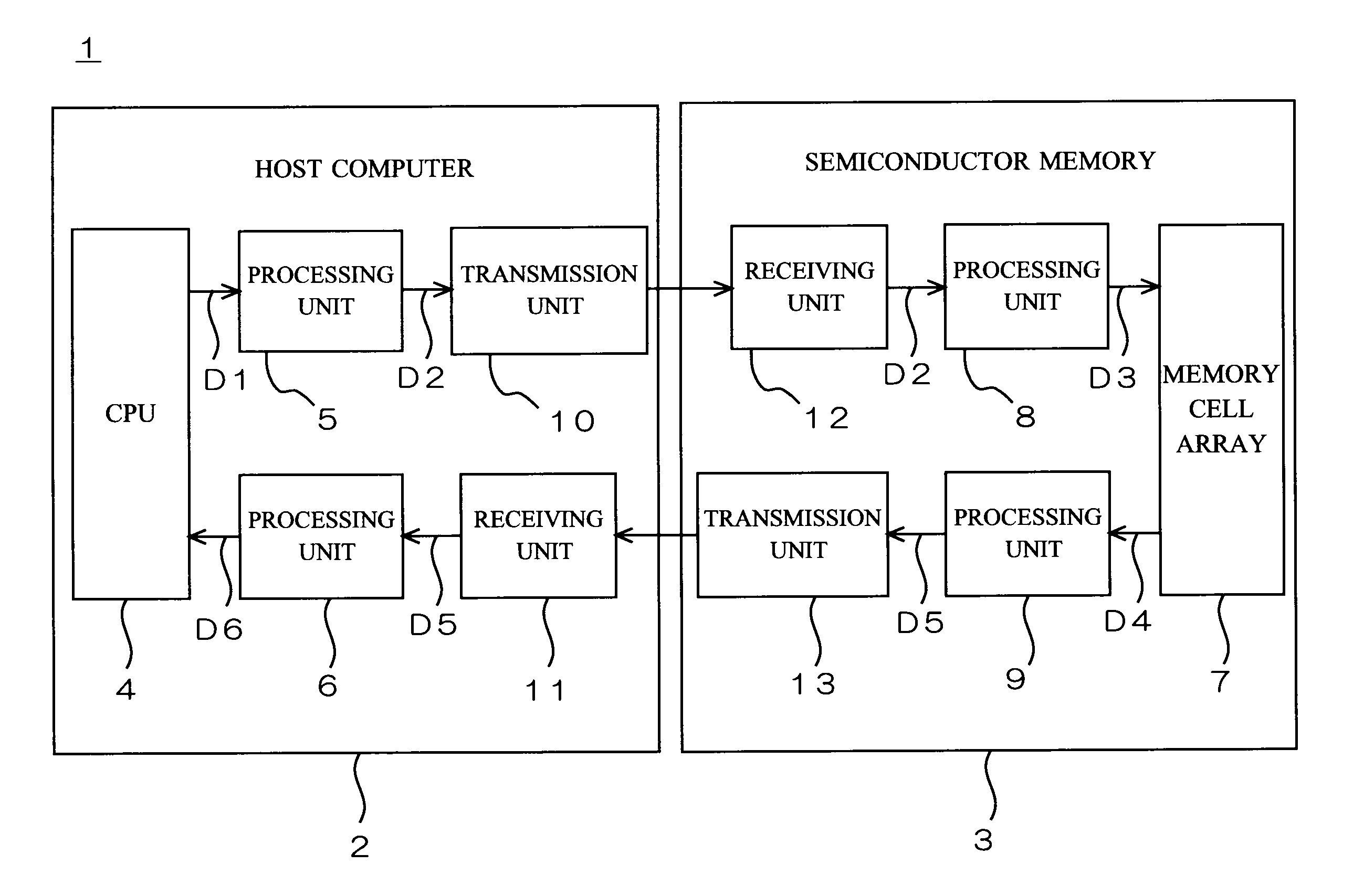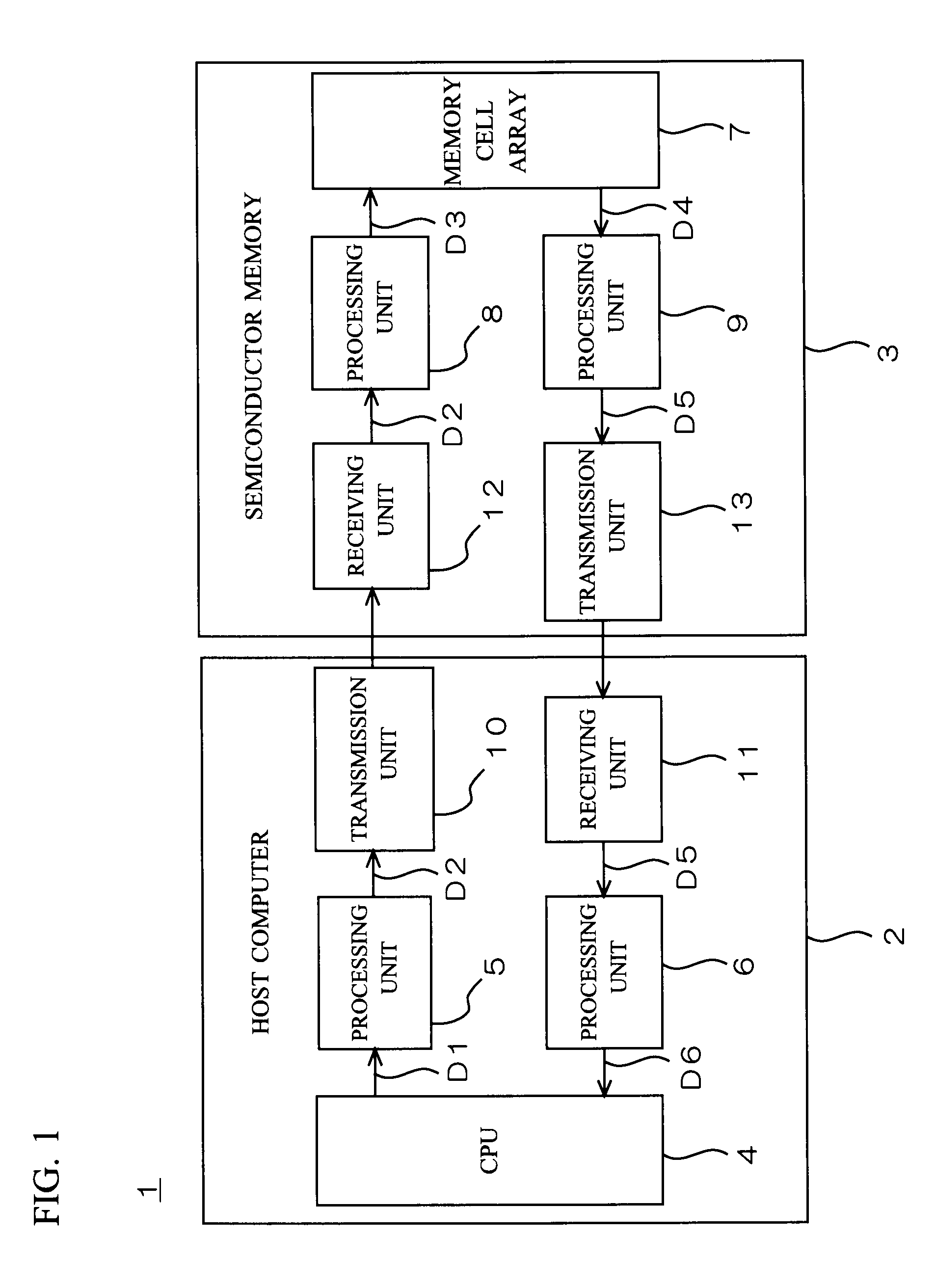Signal processor with an encrypting or decrypting device in a memory system
a memory system and sign processor technology, applied in the field of signal processors, can solve problems such as the decrease of the storage capacity of an area for storing data, and achieve the effect of minimizing the addition of resources and high security
- Summary
- Abstract
- Description
- Claims
- Application Information
AI Technical Summary
Benefits of technology
Problems solved by technology
Method used
Image
Examples
first preferred embodiment
[0060]FIG. 1 is a block diagram showing an overall configuration of a signal processor 1 according to a first preferred embodiment of the present invention. The signal processor 1 includes a host computer 2 and a semiconductor memory 3. The semiconductor memory 3 is, for example, a memory card which is detachably connected to the host computer 2.
[0061]As shown in FIG. 1, the host computer 2 includes a CPU 4, processing units 5 and 6, a transmission unit 10, and a receiving unit 11. The semiconductor memory 3 includes a memory cell array 7, processing units 8 and 9, a receiving unit 12, and a transmission unit 13.
[0062]The present invention is illustrated below with an example of the host computer 2 reading data stored in the memory cell array 7. The present invention, however, is applicable not only to reading data from the memory cell array 7 but also to other processes such as writing data to the memory cell array 7.
[0063]Referring to FIG. 1, the CPU 4 outputs a command D1 for rea...
second preferred embodiment
[0112]FIG. 11 is a block diagram showing a configuration of a processing unit 5 shown in FIG. 1 of the signal processor 1 according to a second preferred embodiment of the present invention. The processing unit 5 includes a buffer region 54 which is referred to by an encryption unit 53, in addition to the buffer region 51, encryption key generation unit 52, and encryption unit 53, which are the elements same as those in the first preferred embodiment shown in FIG. 2.
[0113]Immediately after the signal processor 1 is turned on, the encryption key generation unit 52 reads original data 20 and a generation rule 21 from the buffer region 51, and modifies the original data 20 variously based on the generation rule 21 to generate a plurality of encryption keys 22. The method for generating the encryption keys 22 is the same as in the description for the first preferred embodiment. After that, the encryption key generation unit 52 produces a key information table 23 described below based on...
third preferred embodiment
[0137]As a third preferred embodiment of the present invention, a modification of the first and second preferred embodiments is illustrated below.
[0138]FIG. 22 is a block diagram showing a modification of the processing unit 5 shown in FIGS. 2 and 11. FIG. 22 shows only a part of the configuration of the processing unit 5. In the example shown in FIG. 2, the encryption key 22 outputted from the encryption key generation unit 52 is directly (i.e. without modification) inputted to the encryption unit 53. Similarly, in the example shown in FIG. 11, the encryption key 22 outputted from the buffer region 54 is directly (i.e. without modification) inputted to the encryption unit 53. In contrast, in the modification shown in FIG. 22, the encryption key 22 outputted from the encryption key generation unit 52 (or the buffer region 54) is inputted to a modifying unit 71 and is changed to another encryption key 22b by the modifying unit 71. Then, the encryption key 22b outputted from the modif...
PUM
 Login to View More
Login to View More Abstract
Description
Claims
Application Information
 Login to View More
Login to View More - R&D
- Intellectual Property
- Life Sciences
- Materials
- Tech Scout
- Unparalleled Data Quality
- Higher Quality Content
- 60% Fewer Hallucinations
Browse by: Latest US Patents, China's latest patents, Technical Efficacy Thesaurus, Application Domain, Technology Topic, Popular Technical Reports.
© 2025 PatSnap. All rights reserved.Legal|Privacy policy|Modern Slavery Act Transparency Statement|Sitemap|About US| Contact US: help@patsnap.com



